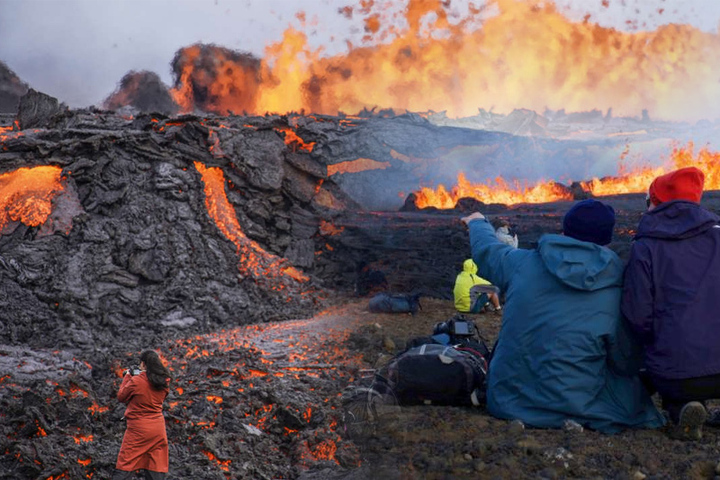
Iceland’s volcano is top on the list for tourists
One day after the crack formed in an uninhabited valley, curious onlookers made their way to the site of a volcano that’s erupting in Iceland’s capital city of Reykjavik on Thursday (August 4) to marvel at the bubbling lava. Iceland’s volcano is located near Reykjavik.
Near the site of the Mount Fagradalsfjall volcano in southwestern Iceland, which emitted magma for a period of six months between March 2021 and September 2021, the eruption took place approximately 40 kilometers (km) away from Reykjavik.
The eruption from the previous year was simple to reach on foot and attracted more than 435,000 visitors. However, this year’s eruption is more difficult to reach and requires visitors to undertake a tough and hilly 90-minute hike from the nearest parking lot.
Iceland’s volcano is the travel trend
According to the Icelandic Tourist Board, there were more than 1,830 visitors to the site on the first day of the eruption, and additional tourists were observed hiking to the scene early on Thursday. Despite this, the eruption attracted a large number of people.
The Icelandic Meteorological Office announced on Thursday that the fissure was believed to be approximately 360 meters in length, with lava fountains reaching heights of approximately 10 to 15 meters.
According to measurements carried out by scientists from the Institute of Earth Sciences on Wednesday at 1705 GMT (Thursday, 1.15am, Singapore time), which was 3.5 hours after the eruption first started, the average volume of lava flow during the first hours was estimated to be 32 cubic meters per second.
That is approximately four to five times more than at the commencement of the eruption that took place the year before.
The Institute stated in a statement that they made on Facebook that “the present explosion is therefore far more forceful.”
It was estimated that the lava spread across an area of approximately 74,000 square meters.
In comparison, the Iceland volcano eruption that lasted for six months the year before spread 150 million cubic meters of lava across 4.85 square kilometers.
Officials had first requested that people avoid going to the location until a risk assessment could be carried out.
Related Posts
On the other hand, the Department of Civil Protection and Emergency Management issued a statement on Thursday stating that young children should not approach the area where the eruption is taking place.
Gases produced by a volcanic eruption, particularly sulfur dioxide, can accumulate to dangerous levels in the local area. These gases can endanger one’s health and can prove fatal in extreme cases.
The wind surround the Iceland volcano can also carry the pollutants caused by gas emissions.
On the Reykjanes peninsula in southwestern Iceland is where you’ll find Mount Fagradalsfjall. This mountain is part of the Krysuvik volcanic system.
Iceland, also known as the country of fire and ice, has 32 volcanic systems that are now considered to be active. This is the largest number of active volcanic systems in Europe. On average, the nation has had a volcanic eruption once every five years. After all, the Iceland volcano seems to be on everyone’s bucket list because of the incredible sight.
The eruption from the previous year was simple to reach on foot and attracted more than 435,000 visitors. However, this year’s eruption is more difficult to reach and requires visitors to undertake a tough and hilly 90-minute hike from the nearest parking lot.




